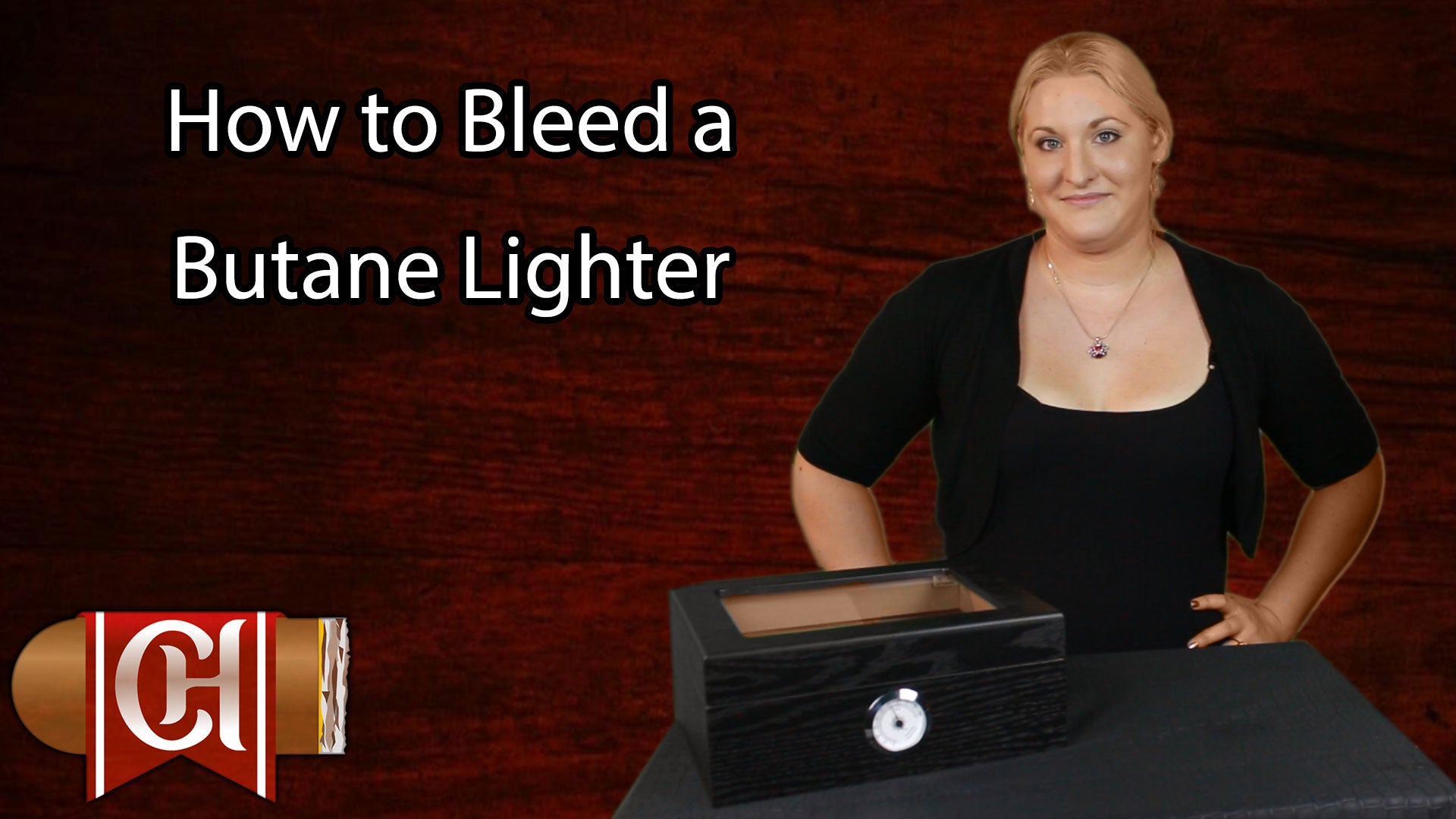Your Cart is Empty

Your cigar lighter is an integral part of the smoking process, whether you have a torch lighter, dual torch or another type of lighter. However, lighter maintenance and troubleshooting should be part of your regular care regimen, in order to ensure that your lighter works properly every time. That said, some smokers are unaware of the importance of bleeding a lighter. Regularly bleeding your lighter will help ensure that your smoking experience is enjoyable.
Why should you learn how to bleed a butane lighter? When you bleed your lighter, you eliminate old fuel and even air that can build up within the fuel chamber. Old fuel mixed with air can make your flame sputter and flicker, reducing your ability to gain a clean light. The bleeding process is very simple and you'll only need a single tool to accomplish it.
The first step is to hold the lighter vertically, with the bottom of the lighter facing upward. Do not hold the lighter near your face or your ears during this process. Now, locate the filler nozzle, which is the metal nipple on the bottom of the lighter through which fuel is added. Once you have located the nozzle, you will need a small screwdriver or another similar tool. Depress the nozzle with the tool and you will hear the hiss of escaping gas and air. Do not perform this operation near an open flame.

You should bleed your lighter whenever you notice that the fuel is becoming low. If your lighter does not have the means to check the fuel level, you will have to rely on the performance of the flame.
Spitting or flaring are good signs that your lighter is nearing the empty mark and needs to be bled. Exercise care when bleeding and you will remain safe during this vital process.
While there are many types of lighters including torch and flat flame lighters on the market, cigar owners, fireworks enthusiasts, or people that simply enjoy using a torch lighter have a few things to consider when looking for their ideal product. Since so many manufacturers have been attempting to improve the lighters on the market, […]